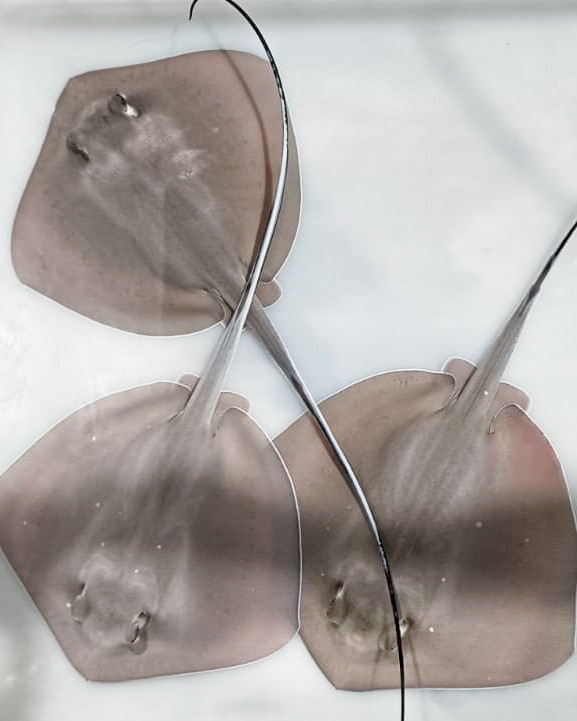- Introduction to the whiptail stingray (Hypanus americanus) and its ecological significance.
- Physical characteristics and defense mechanisms of the whiptail stingray.
- Behavioral patterns and habitat preferences of the whiptail stingray.
- The role of zoos and aquariums in the conservation of marine species.
- Opportunities for public engagement and education about the whiptail stingray.
The recent arrival of three new whiptail stingray (Hypanus americanus) pups marks an exciting development at the Guardería de Océanos. These fascinating creatures offer a unique opportunity to explore the intricacies of marine life and the broader ecological significance of stingrays. Through an understanding of their biology, behavior, and conservation, we can appreciate the vital role they play in marine ecosystems.
Whiptail stingrays, known for their elongated, whip-like tails, are noteworthy for their venomous defense mechanisms. This adaptation helps protect them from predators, utilizing a venomous spine capable of inflicting pain. Their body is adapted to life on the sea floor, enabling them to bury themselves in the sand for camouflage and predation.
During daylight, whiptail stingrays typically remain hidden beneath the sandy or muddy substrates of the ocean. This behavioral adaptation not only aids in their protection but also positions them wisely in their role as both predator and prey within the marine food web. By consuming benthic organisms, they contribute to the balance of marine ecosystems, regulating the populations of their prey.
The habitat of Hypanus americanus is diverse, extending across the Atlantic Ocean and encompassing sandy and muddy bottoms where these stingrays thrive. They are particularly prevalent in warm coastal waters, taking advantage of the ample food sources and cover provided by these environments. Understanding these habitat preferences is crucial for conservation and management efforts, as it informs efforts to protect and sustain their natural environments.
Zoos and aquariums play a crucial role in the protection and education of marine species like the whiptail stingray. The Guardería de Océanos provides an exemplary setting for conservationists to study and care for these creatures. Through breeding programs and public educational initiatives, such institutions raise awareness about the ecological importance of stingrays and the threats they face, like habitat destruction and pollution.
Public engagement is a fundamental aspect of wildlife conservation. Visitors to places like the Guardería de Océanos have the opportunity to observe whiptail stingrays up close. Educational programs and interactive exhibits help convey the significance of these animals, inspiring a sense of responsibility towards conserving marine biodiversity.
By integrating conservation efforts with educational outreach, institutions can inspire the public to act in ways that protect these vital marine species. Initiatives aimed at reducing plastic pollution and supporting sustainable fisheries are just some of the actions that can positively impact the conservation of stingrays and other marine life.
The arrival of new pups at the Guardería de Océanos is a promising sign for both conservation efforts and public engagement. These young stingrays not only add to the genetic diversity and resilience of their species but also serve as ambassadors for marine conservation, fostering a deeper connection between humans and the underwater world.
*****
Source Description
🌊 ¡Damos la bienvenida a tres nuevas crías de raya látigo (𝘏𝘺𝘱𝘢𝘯𝘶𝘴 𝘢𝘮𝘦𝘳𝘪𝘤𝘢𝘯𝘶𝘴)!
✨ Su nombre común se debe a la larga cola en forma de látigo, que además es venenosa y le sirve como sistema de defensa.
Durante el día, suele permanecer enterrada en la arena, aunque también puede encontrarse en fondos fangosos.
🐟 Muy pronto podréis verlas de cerca en la Guardería de Océanos. ¡No os lo perdáis!


